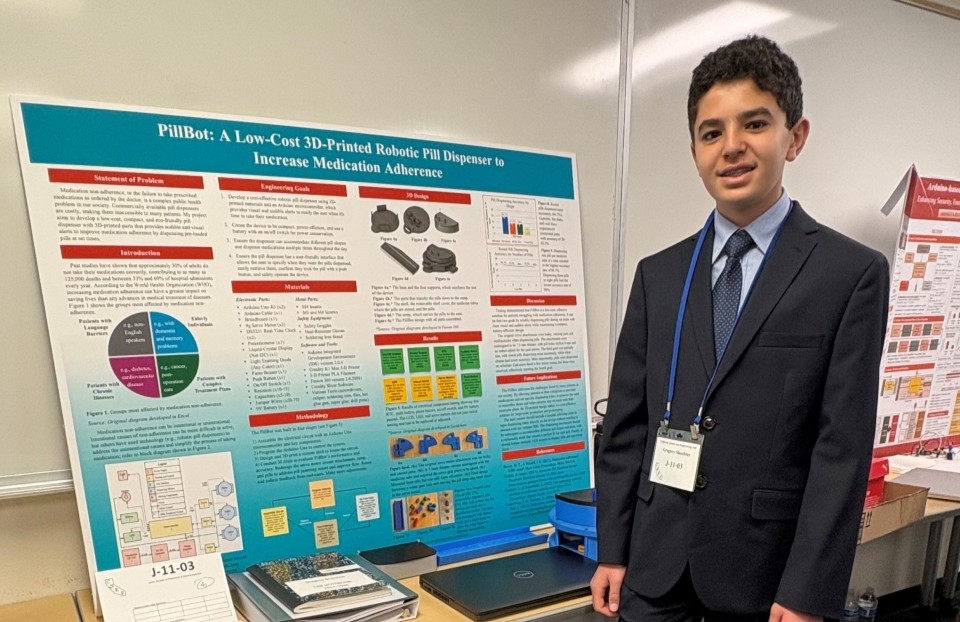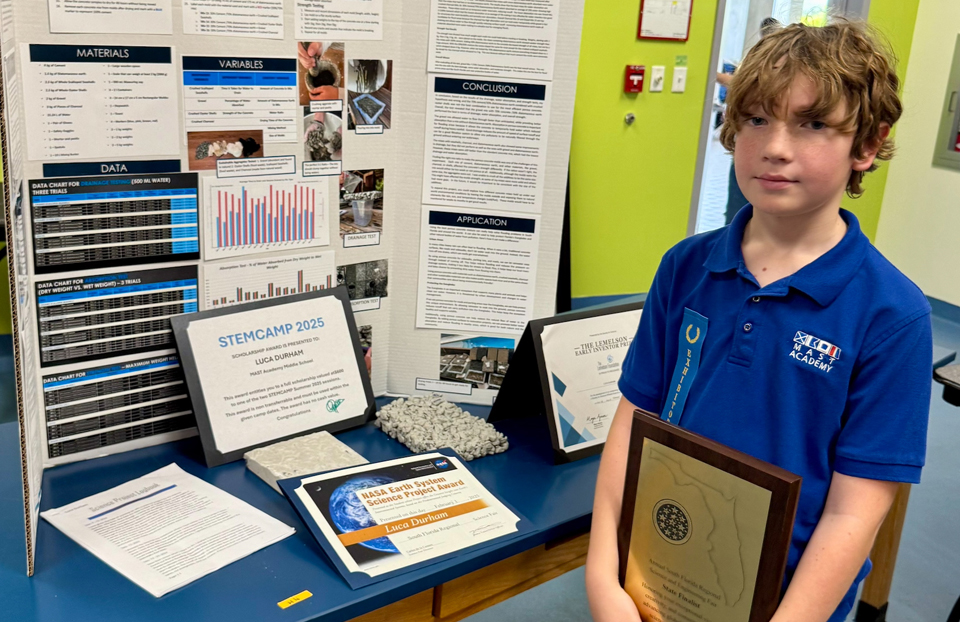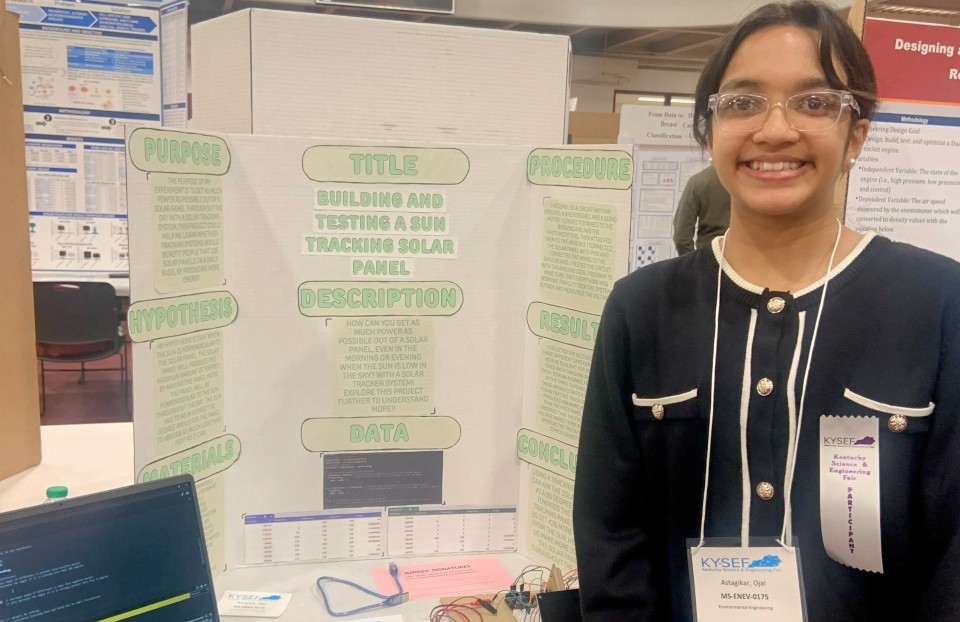Lemelson Foundation, Young & Amazing
Middle schooler invents therapy tool for sister
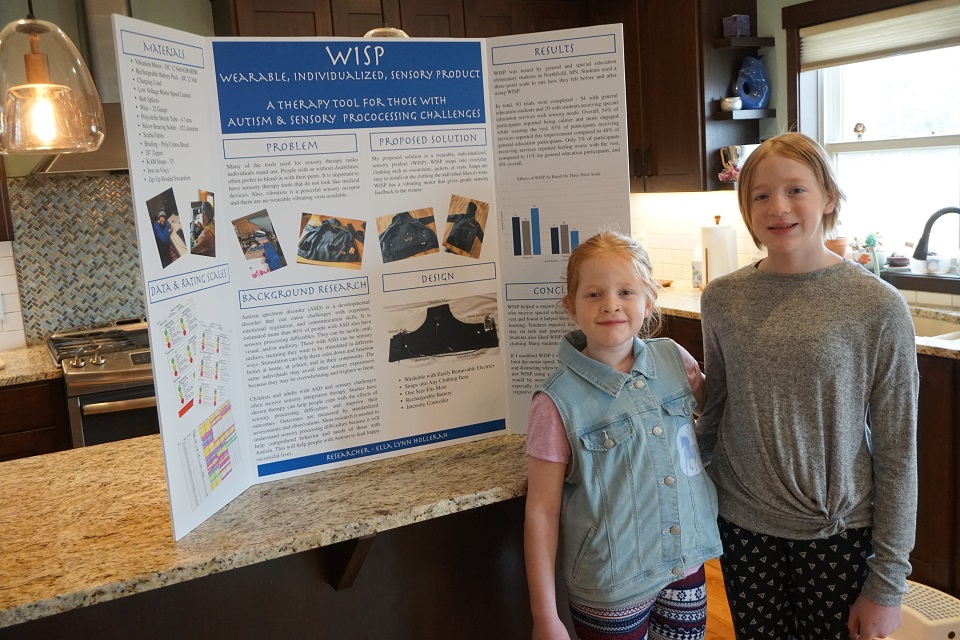
Last year, The Lemelson Foundation gave $100 awards to outstanding young inventors in 132 Society Affiliate Fairs with middle school participants around the country. This is the second year of a three-year grant where young innovators will be recognized. The prize was especially created to reward young inventors whose projects exemplify the ideals of inventive thinking by identifying challenges in their communities and creating solutions that will improve lives.
Inventors are problem-solvers, seeking solutions to challenges they identify. Sometimes, they are motivated by their own personal lives, and this was the case for Ella Holleran, an eighth-grader at Northfield Middle School in Minnesota. Ella’s science project, “WISP – Wearable, Individualized, Sensory Product – A Therapy Tool for Those with Autism & Sensory Processing Challenges,” earned her the Lemelson Early Inventor Prize at the Southern Minnesota Regional Science & Engineering Fair.
Ella invented a battery powered, vibrating back panel that can snap into any zip-up or button-up piece of clothing, like a hooded sweatshirt, fleece or denim jacket. “It was important it could be attached inside store bought clothing,” she elaborated. “Those with autism and sensory needs are most often like their neurotypical peers and want to fit in. They don’t want to wear something that looks like a therapy device.”
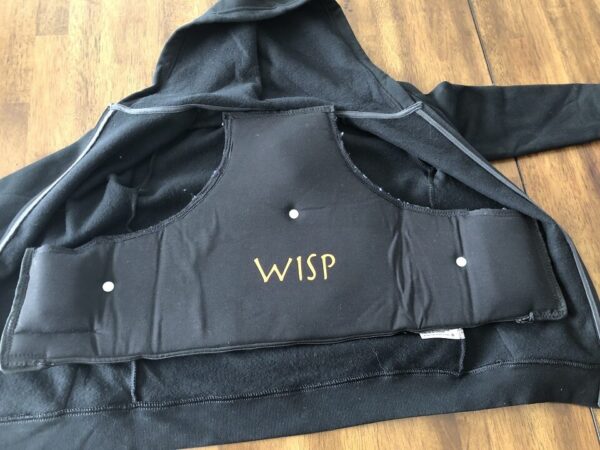
She was inspired by her sister, Helena, who has autism. “Helena is a smart kid who loves all things horses. When she is overwhelmed and upset, she calms down when I tickle her back. I figured this out when she was a toddler,” Ella explained. “So, I decided to invent a massaging device she could wear under her clothing, so she could calm down even if someone was not there to tickle her back.”
Before Ella began building her invention, she met with the occupational therapist at her school district to find out more about sensory needs and therapy best practices. She also conducted background research on neurodiversity, autism and sensory processing disorders. “Sensory therapy is often used to help those with autism improve their ability to be successful at home, in school and in their communities,” Ella learned. “Vibration is a powerful sensory tool, yet there are no wearable vibrating vests on the market.”
Getting the right vibration device was not an easy task. “I ordered many different devices and motors and took them apart to see how they worked. Several did not provide enough vibration. Others were way too bulky. I also needed to figure out the right material to hold the vibration device, battery, and intensity controller. It couldn’t be too flimsy or too stiff. It had to be comfortable for the wearer.” Nonetheless, Ella persisted until she found something that worked. “The motto at our home is, ‘We can do hard things.’ I just kept trying until I figured it out because I can do hard things.”
After Ella constructed a massaging vest, she tested the product at her former elementary school with general and special education students. “Participants used a three-point scale to rate how they felt before and while using the device. In total, 83 trials were completed—54 with general education students and 29 with students receiving special education services with sensory needs,” she said. Ella concluded that her invention helped a majority of students receiving special education services. They found it helped them stay calm and engaged in learning. Teacher observations confirmed these results.
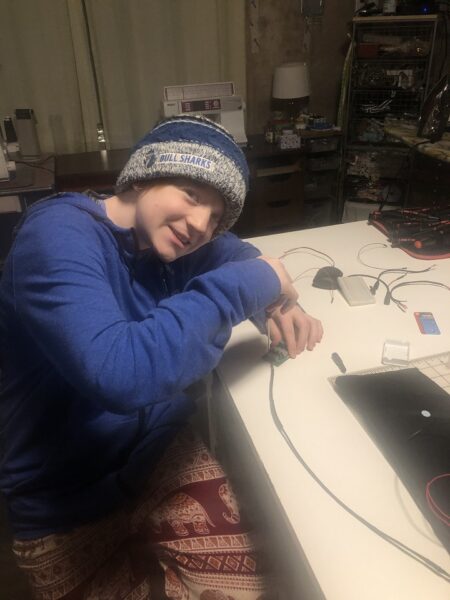
Ella’s favorite part about the invention process was using all the tools needed to build the WISP—a soldering iron, sewing machine, overlock machine and others. “It was fun experimenting with different vibration motors and wiring everything together.” She is honored to have won the Lemelson Early Inventor Prize and hopes her research will help inspire middle school students to find new ways to help people with autism and sensory needs. “This invention is important because it’s easy to overlook and underestimate the potential of neurodiverse individuals. I know my sister is smart and loving, but some may only see her outbursts and challenges. My invention helps Helena cope and allows her to shine. I hope it makes the future brighter for many others like her.”
